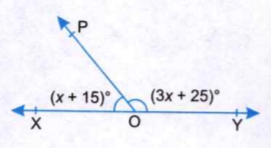When micropyle, chalaza and hilum lie in a straight line, the ovule is said to be
anatropous
orthotropous
amphitropous
campylotropous
The correct Answer is:B
Step-by-Step Solution:
1. Understanding the Terms:
- Micropyle: The opening in the ovule through which the pollen tube enters.
- Chalaza: The part of the ovule opposite the micropyle, where the ovule attaches to the ovary wall.
- Hilum: The scar on the seed where it was attached to the ovule.
2. Identifying the Types of Ovules:
- There are four main types of ovules based on the arrangement of the micropyle, chalaza, and hilum:
- Anatropous: The ovule is inverted, with the micropyle close to the funicle.
- Orthotropous: The micropyle, chalaza, and hilum are aligned in a straight line.
- Amphitropous: The ovule is curved, but the micropyle and chalaza are not in a straight line.
- Campylotropous: The ovule is curved, with the micropyle and chalaza not aligned.
3. Analyzing the Question:
- The question asks for the type of ovule where the micropyle, chalaza, and hilum are in a straight line.
4. Identifying the Correct Answer:
- In the orthotropous condition, the micropyle, chalaza, and hilum are indeed in a straight line. This is the only type that meets the criteria given in the question.
5. Conclusion:
- Therefore, the correct answer to the question is orthotropous.
Final Answer: The ovule is said to be orthotropous when the micropyle, chalaza, and hilum lie in a straight line.
---
- Micropyle: The opening in the ovule through which the pollen tube enters.
- Chalaza: The part of the ovule opposite the micropyle, where the ovule attaches to the ovary wall.
- Hilum: The scar on the seed where it was attached to the ovule.
- There are four main types of ovules based on the arrangement of the micropyle, chalaza, and hilum:
- Anatropous: The ovule is inverted, with the micropyle close to the funicle.
- Orthotropous: The micropyle, chalaza, and hilum are aligned in a straight line.
- Amphitropous: The ovule is curved, but the micropyle and chalaza are not in a straight line.
- Campylotropous: The ovule is curved, with the micropyle and chalaza not aligned.
- The question asks for the type of ovule where the micropyle, chalaza, and hilum are in a straight line.
- In the orthotropous condition, the micropyle, chalaza, and hilum are indeed in a straight line. This is the only type that meets the criteria given in the question.
- Therefore, the correct answer to the question is orthotropous.
Topper's Solved these Questions
- BOOK - NCERT FINGERTPS ENGLISHCHAPTER - SEXUAL REPRODUCTION IN FLOWERING PLANTSEXERCISE - HOTS5videos
SEXUAL REPRODUCTION IN FLOWERING PLANTS
- BOOK - NCERT FINGERTPS ENGLISHCHAPTER - SEXUAL REPRODUCTION IN FLOWERING PLANTSEXERCISE - NCERT20videos
SEXUAL REPRODUCTION IN FLOWERING PLANTS
- BOOK - NCERT FINGERTPS ENGLISHCHAPTER - REPRODUCTIVE HEALTHEXERCISE - Reproductive Health133videos
REPRODUCTIVE HEALTH
- BOOK - NCERT FINGERTPS ENGLISHCHAPTER - STRATEGIES FOR ENHANCEMENT IN FOOD PRODUCTIONEXERCISE - Strategies For Enhancement In Food Production151videos
STRATEGIES FOR ENHANCEMENT IN FOOD PRODUCTION
Similar Questions
When ovule is straight so the funiculus, chalaza and micropyle lie in one vertical line, the ovule is said to be ?
View SolutionMotion in Straight line
View SolutionCanal rays travel in a straight line.
View SolutionWhen ovule is straight with funiculus, embryo sac, chalaza and micropyle lying iin a straight vertical line, it is known as
View Solutionldentify the following statements as true (T) or false (F) and select the option accordingy.A. In a pistil, the proximal end of style is attached to the ovary. B. Micropyle, chalaza and funidle in an anatropous ovule are in a straight line. C. Walls of the ovules are called pericarps.
View SolutionIdentify the characters of plant where 8-nucleate embryo sac was first studied by strasburger
(a) Micropyle, chalaza and funiculus in same vertical line
(b) Both unisexual and bisexual flowers on same plant
(c) Filiform apparatus conducts food from endsoperm to egg apparatus
(d) Long funiculus coils like watch spring around the ovule.View SolutionOvule is straight with funiculus, embryo sac, chalaza and micropyle lying on one straight line. It is
View SolutionMicropyle in the ovule is formed by
View SolutionIn the given figure, XOY is a straight line.
 View Solution
View SolutionWhich of the following is a straight line graph?
View Solution

